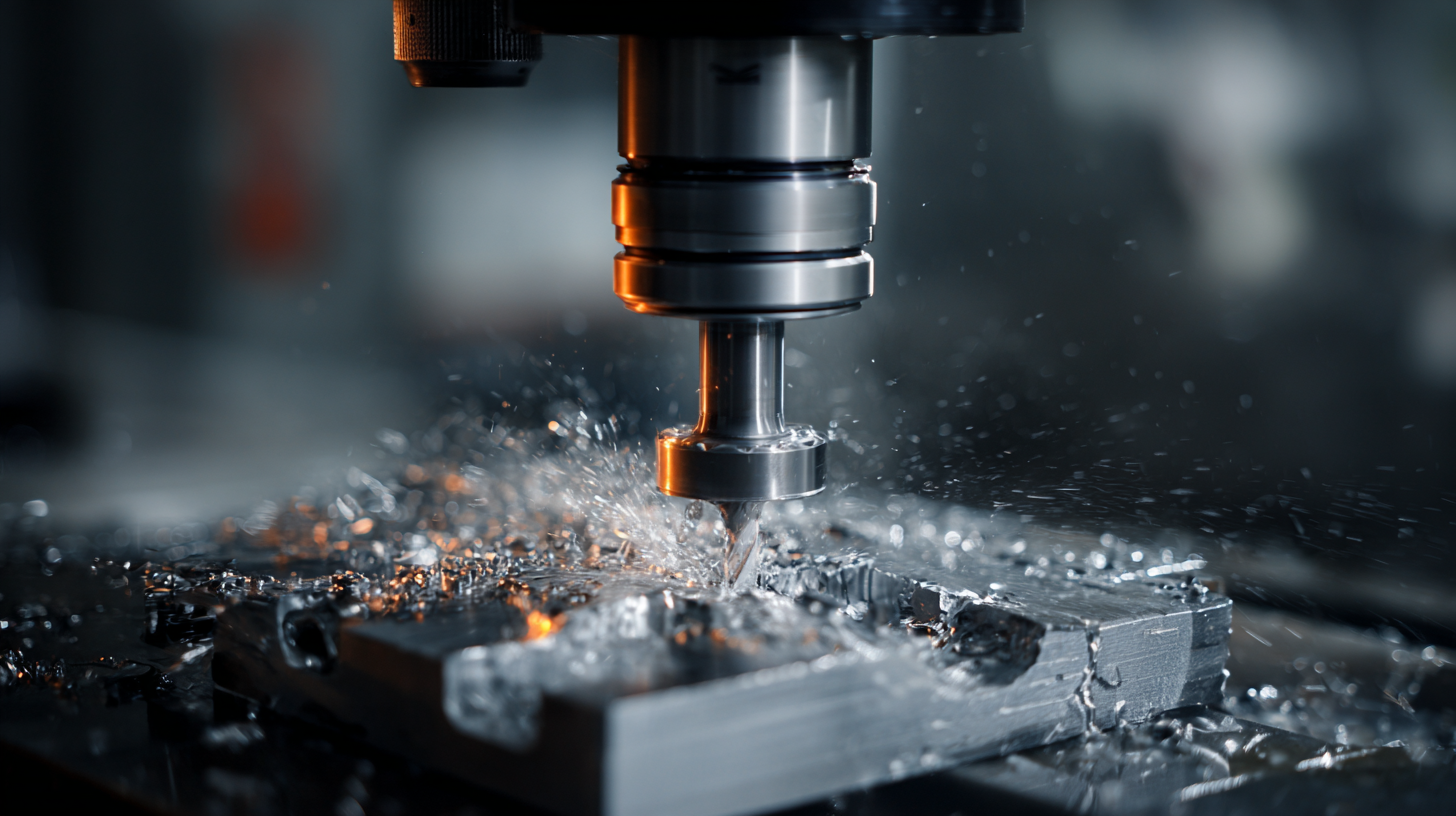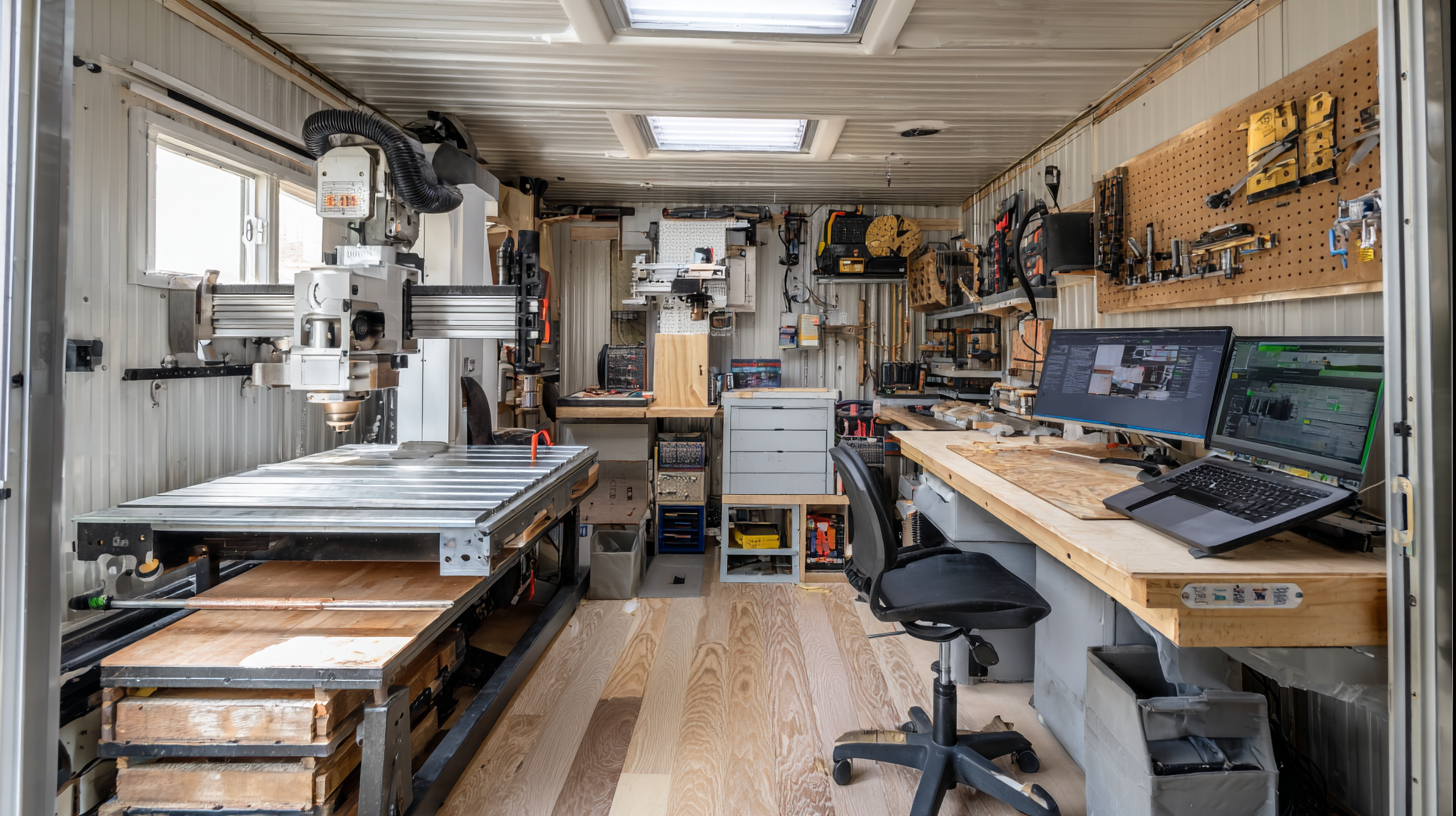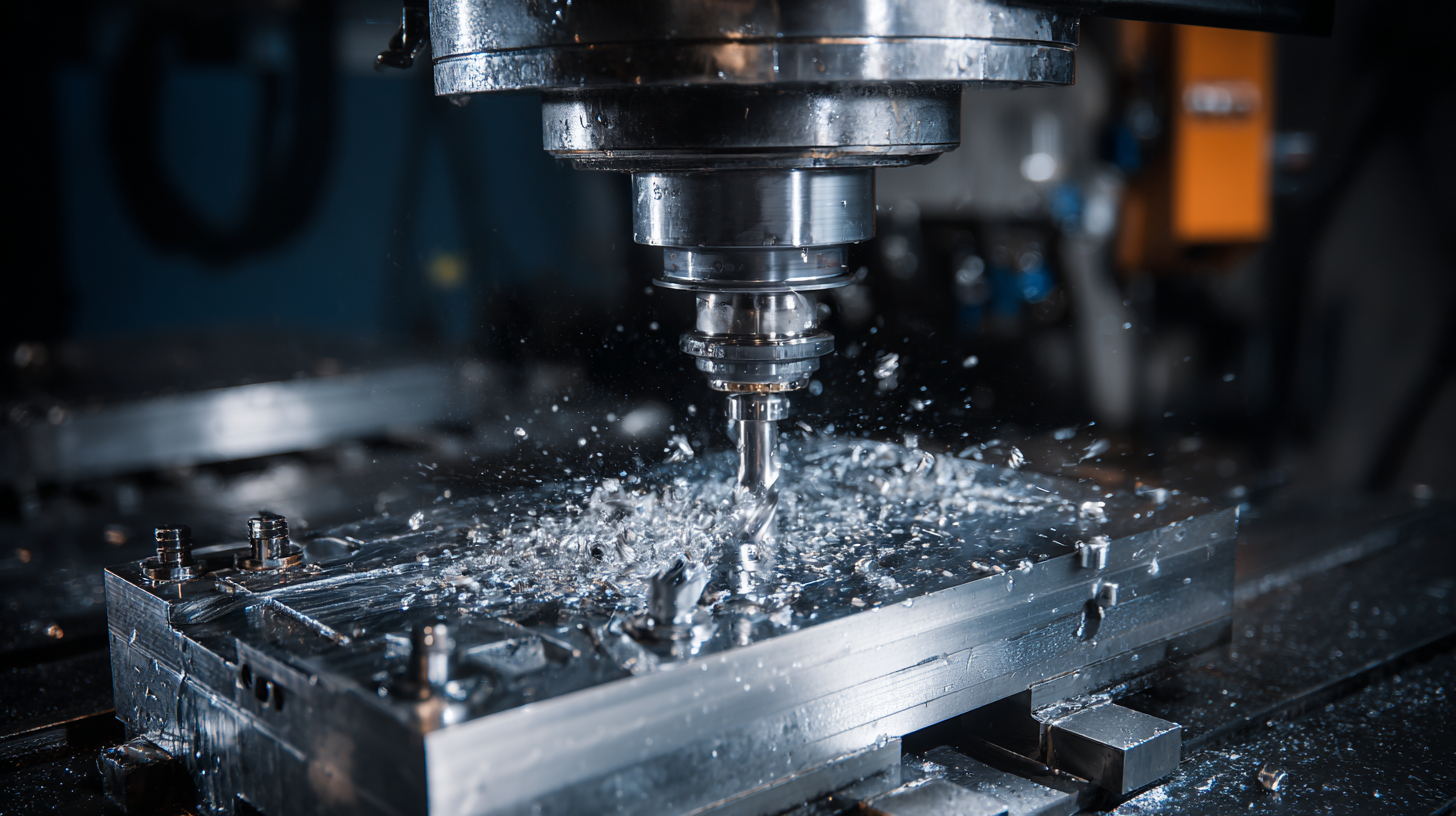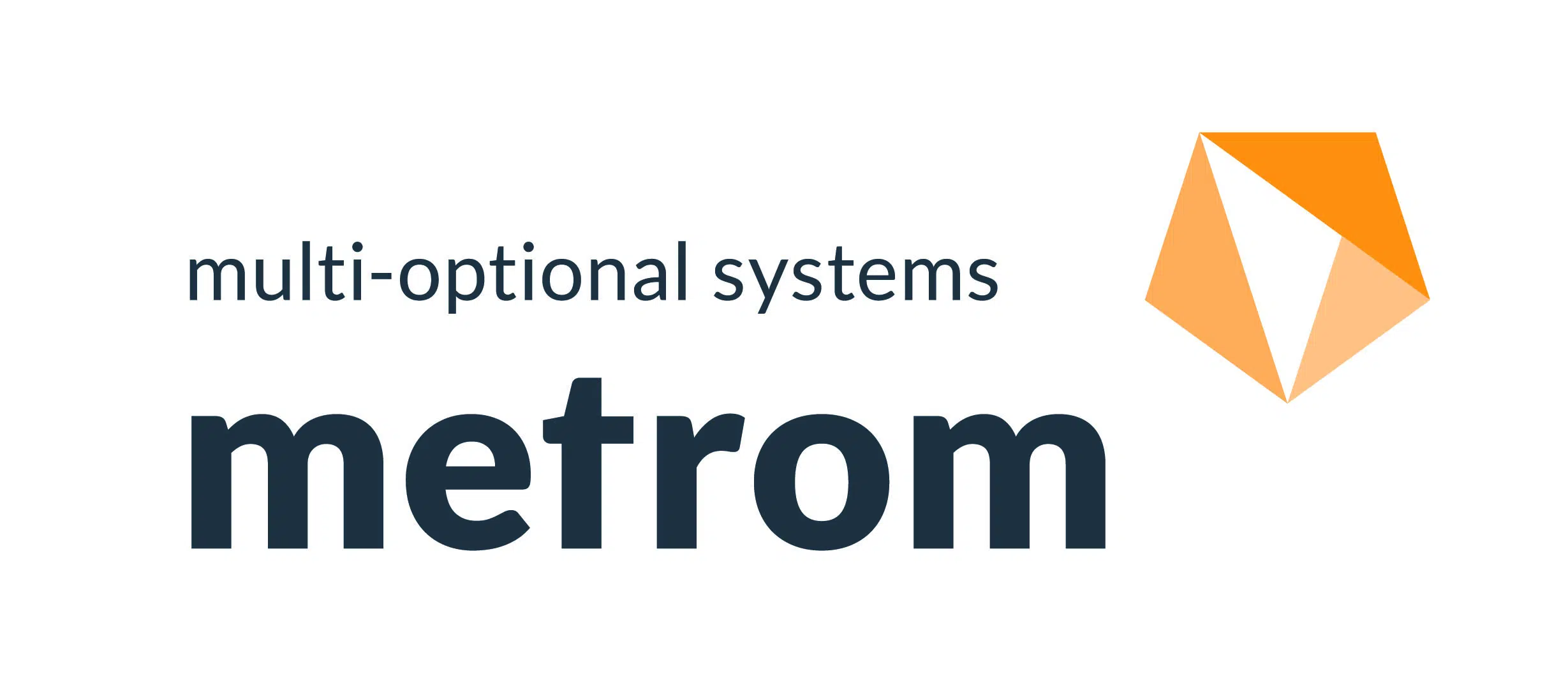METROM’s
Blog
METROM’s
Blog
Mastering Efficiency with the Best Mobile Milling Machine for Onsite Precision Cutting Tips and Techniques
In today's fast-paced manufacturing landscape, the demand for precision and efficiency is paramount, driving innovation in various machinery, particularly in the realm of the mobile milling machine. Industry reports indicate that the global milling machine market is projected to reach USD 100 billion by 2025, fueled by advancements in technology and the increasing need for onsite production capabilities.

Mobile milling machines have revolutionized the way contractors approach projects, offering unparalleled flexibility and cutting accuracy in diverse environments, from construction sites to remote workshops. As businesses strive for lean operations and reduced downtime, mastering the use of mobile milling machines not only enhances productivity but also ensures high-quality outcomes, aligning with the core principles of "China Manufacturing, Global Sales, Quality Assurance." This blog will delve into the tips and techniques necessary for maximizing the efficiency of mobile milling machines, ensuring a competitive edge in the modern market.
Choosing the Right Mobile Milling Machine for Your Project Needs
When it comes to onsite precision cutting, choosing the right mobile milling machine is crucial for the success of your project. The first step in this process is to assess your specific project needs, which will vary based on factors such as material type, size, and complexity. For instance, if you're working with tough materials like steel or concrete, you'll require a machine with high torque and robust cutting capabilities. It’s also essential to consider the machine’s portability and ease of use, particularly if you’ll be relocating it frequently across different job sites.
Next, evaluate the features and specifications that are most important for your operations. Look for a mobile milling machine that offers adjustable speed settings, various cutting tools, and advanced digital controls for precision adjustments. Durability and maintenance requirements should not be overlooked; a well-built machine with ease of servicing will save you time and costs in the long run. By carefully considering these factors, you can select a mobile milling machine that not only meets your project's specific demands but also enhances overall efficiency on-site, ensuring high-quality precision cutting.
Essential Features to Look for in an Onsite Milling Machine
When selecting an onsite milling machine, understanding the essential features that enhance efficiency and precision is paramount. A top-tier mobile milling machine should offer advanced technology capabilities that foster quick and accurate cuts. Look for models that provide a compact design, making them suitable for tight job sites, while also ensuring cost-effective operations. Innovations in portable machine tools have led to improved performance, allowing for greater versatility in various milling applications.
Sustainability is another critical factor in selecting a milling machine. Machines designed with eco-friendly features not only reduce environmental impact but also contribute to creating safer working conditions. As the global market for portable machine tools continues to grow, projected to reach $42,818.1 million by 2030, manufacturers are focusing on refining their technologies to meet the evolving demands. The ideal milling machine will integrate these essential features, ensuring operators can personalize their machinery to meet specific project requirements effectively.
Mastering Efficiency with the Best Mobile Milling Machine for Onsite Precision Cutting Tips and Techniques - Essential Features to Look for in an Onsite Milling Machine
| Feature | Description | Importance |
|---|---|---|
| Portability | Compact design allowing easy transportation between job sites. | High |
| Precision Cutting | Capability to make accurate cuts to meet project specifications. | Essential |
| Ease of Use | User-friendly interface that simplifies operation for workers. | Moderate |
| Versatility | Ability to work with various materials including wood, metal, and composites. | High |
| Maintenance Accessibility | Design allows for easy access to parts for cleaning and repairs. | Moderate |
| Power Source | Options for electric or battery-operated units to suit project needs. | High |
Top Techniques for Achieving Precision Cuts with Mobile Milling
When it comes to achieving precision cuts with a mobile milling machine, specific techniques can elevate your results significantly. One vital tip is to ensure proper setup and calibration of the machine before starting. This includes checking the alignment of the cutting tool and adjusting the feed rate according to the material you are working with. A well-calibrated machine can make a considerable difference in the overall accuracy of your cuts.
Another effective technique involves utilizing the right cutting tools for your specific project. Different materials require different types of blades or bits. For instance, using carbide tips can enhance the durability and sharpness when cutting through tougher materials. Additionally, regular maintenance of your tools will not only prolong their lifespan but also ensure the precision of each cut.
Lastly, always prioritize safety and stability during your milling operations. Securing your workpiece properly and ensuring that the machine is set on a stable surface help maintain accuracy. Implementing these techniques not only improves the quality of your cuts but also streamlines the entire milling process, making it more efficient and precise.
Mastering Efficiency with the Best Mobile Milling Machine
Maximizing Productivity: Tips for Efficient Workflow in Milling Operations
To maximize productivity in milling operations, it’s essential to streamline your workflow through strategic planning and organization. Start by ensuring that all necessary tools and materials are readily available at the job site. This minimizes downtime and allows operators to focus on precision cutting without interruptions. Implementing a well-defined layout for equipment and workspace can further enhance efficiency, allowing for smooth material movement and easy access to the milling machine.

Additionally, incorporating technology into your milling processes can significantly improve productivity. Use mobile milling machines equipped with advanced features such as automatic depth control and real-time monitoring systems. These technologies not only increase accuracy but also reduce the time spent on manual adjustments and quality checks. Training your team on the best practices for operating these machines effectively will ensure they can harness their full potential, leading to faster completion of projects and higher quality results.
Prioritize continuous improvement by regularly reviewing your workflow and making adjustments based on performance metrics and feedback from operators.
Safety Best Practices for Operating Mobile Milling Machines on Site
Operating mobile milling machines on site requires strict adherence to safety practices to protect both the operator and surrounding personnel. According to the Occupational Safety and Health Administration (OSHA), over 200,000 workers sustain injuries every year related to machinery operation. Implementing the best safety protocols can significantly reduce this statistic. Always ensure that the milling machine is inspected regularly, checking for proper functioning of safety guards and emergency shut-off mechanisms.

Tip: Before commencing any milling operation, conduct a thorough risk assessment of the worksite to identify potential hazards such as uneven terrain or nearby personnel. Establish a clear perimeter around the milling area to keep unauthorized individuals at a safe distance.
In addition to safety checks, operators should be trained in proper operating techniques to enhance onsite efficiency. The National Institute for Occupational Safety and Health (NIOSH) recommends regular training sessions to keep operators updated on the latest industry practices. Proper use of personal protective equipment (PPE) such as helmets, gloves, and hearing protection is critical.
Tip: Encourage operators to take regular breaks to avoid fatigue, which can lead to accidents. A well-rested operator is more capable of maintaining focus, thus ensuring safe and efficient milling operations.

